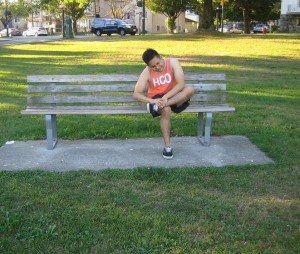Retrocalcaneal bursitis is a common form of bursitis affecting the heel. The condition causes inflammation of the bursa over the heel where the Achilles tendon inserts.
The retrocalcaneal bursa can end up inflamed if the Achilles tendon rubs across the bursa and triggers friction on the heel bone. The injury might have a traumatic cause from a fall or contusion due to sports. It might have a gradual development from repeated trauma to the bursa from activities such as jumping and running or excessively straining the heel. In some cases, it develops as a secondary injury linked to chronic ailments such as:

- Plantar fasciitis
- Achilles tendonitis
- Rheumatoid arthritis
- Fibromyalgia
- Heel spurs
What are the indications?
If an individual has retrocalcaneal bursitis, one or several of the following symptoms are present such as:
- Discomfort or swelling over the rear part of the heel
- Pain when leaning over the heel such as sitting with the heels on the ground
- Pain intensifies when using the calf muscles such as walking, running or calf raises
How is it diagnosed
The doctor will come up with a diagnosis based on the assessment of the medical history and physical exam on the ankle and heel. A characteristic indication is swelling or tenderness of the heel surrounding the insertion site of the Achilles tendon.
A diagnosis is also confirmed with the help of imaging techniques such as MRI or ultrasound.
Management of retrocalcaneal bursitis
The treatment for retrocalcaneal bursitis include the following:
- Application of ice must be done daily to minimize the swelling and pain.
- Medications such as non-steroidal anti-inflammatory drugs (NSAIDs) or anti-inflammatory medications can be given but it is best to consult a doctor first.
- A corticosteroid injection together with a local anesthetic is given directly into the bursa to promote the healing process.
More Information / Disclaimer
The information posted on this page on retrocalcaneal bursitis is for learning purposes only. Learn to recognize and manage issues with the joints by taking a standard first aid course with Saskatoon First Aid.
